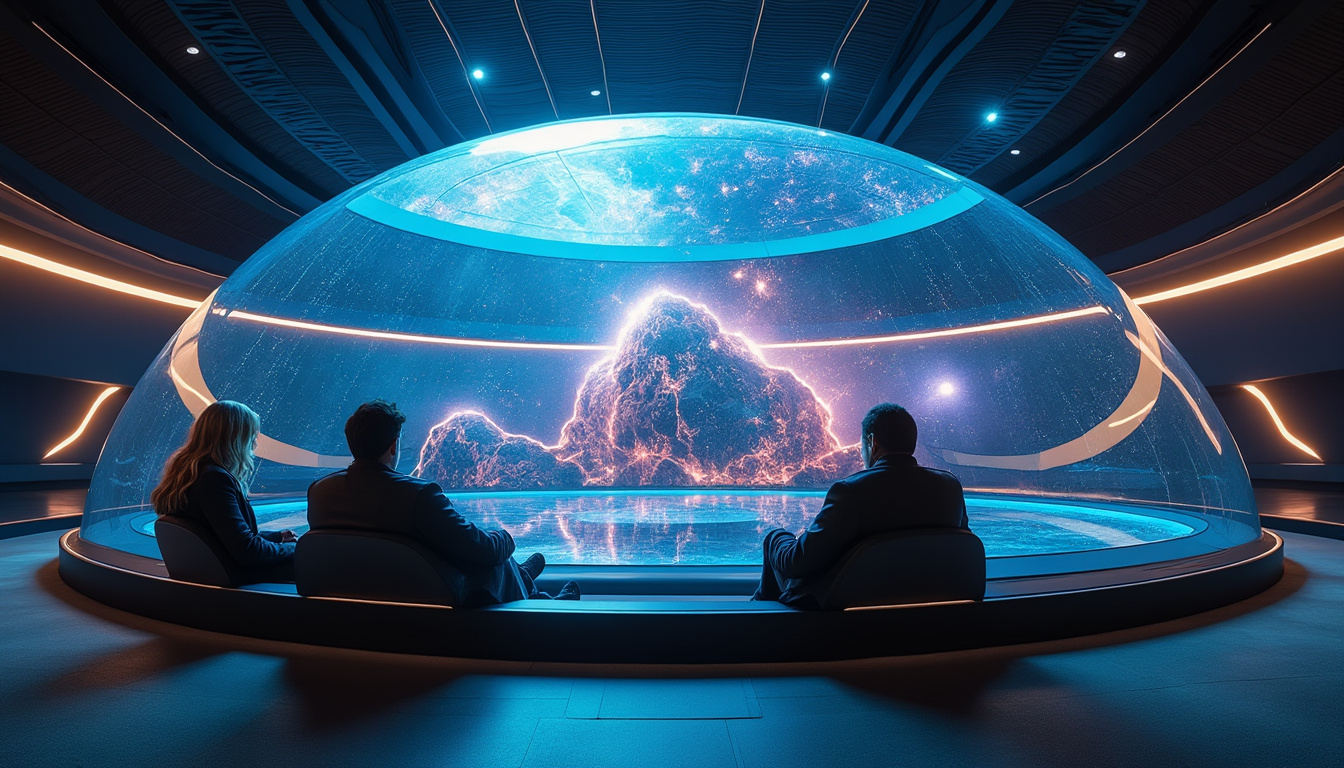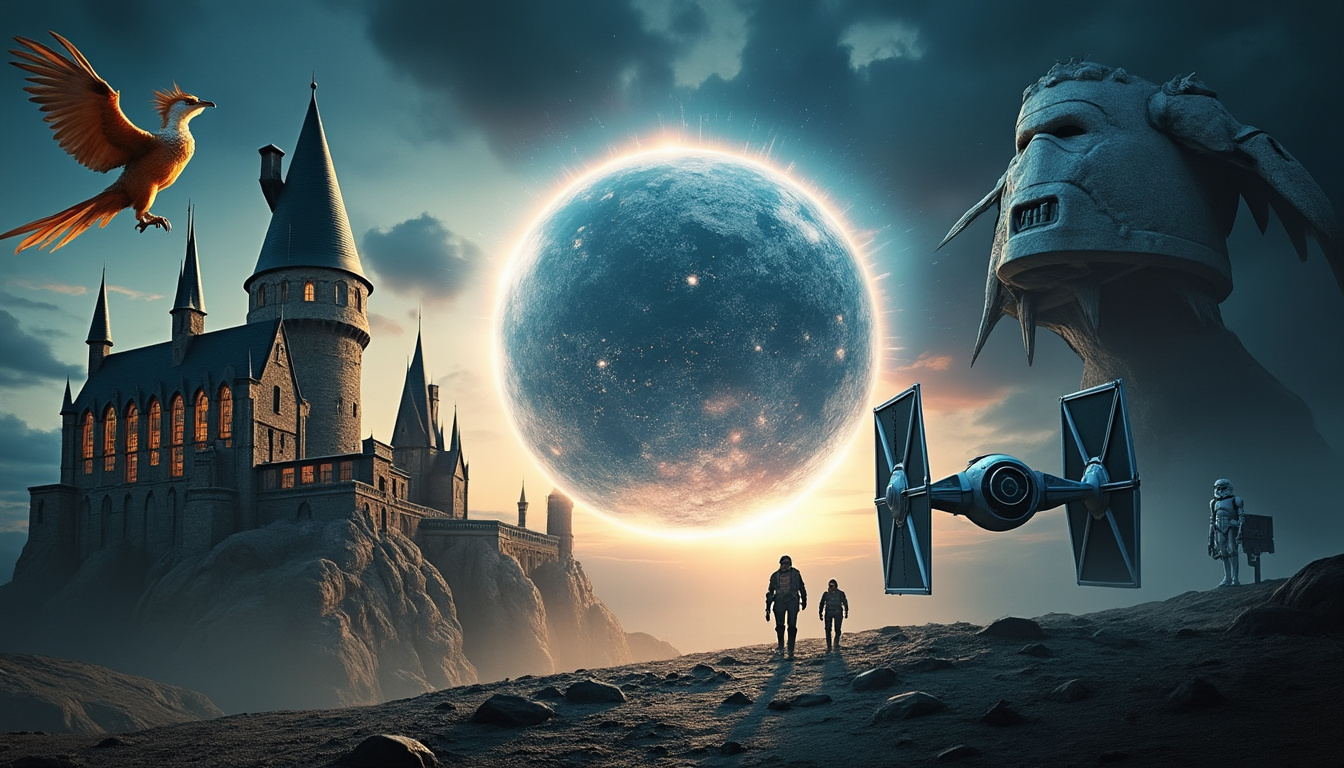The ongoing evolution of cinematic universes is capturing popular interest like never before. Two of the most iconic franchises in film history, Harry Potter and Star Wars, are at the intersection of this trend. As new opportunities arise, there is an emerging narrative that hints at a significant shift in the way fans could experience their beloved stories. This article explores why Harry Potter is more likely to be incorporated into the Sphere Cinematic Universe, especially in light of recent developments at Sphere Studios, while Star Wars finds itself awaiting on the sidelines.
Exploring the Sphere Cinematic Universe and Its Recent Developments
At the heart of the cinematic experience is the Sphere Cinematic Universe, an ambitious project that seeks to redefine how audiences connect with films. This unique venue, designed with state-of-the-art immersive technology, promises to integrate storytelling with outstanding visual experiences. Recently, the buzz has revolved around the release of The Wizard of Oz, which marked the inception of this innovative cinematic experience. Despite initial criticism over its AI enhancements, the strong engagement from audiences signals the potential for future films.

Given that Warner Bros. has expressed enthusiasm for future collaborations, the chance for Harry Potter to join this cinematic universe becomes increasingly plausible. As other films like The Matrix have thrived in this environment, one cannot overlook the potential that rests within the Wizarding World.
The demand for immersive experiences is steadily growing among film enthusiasts. A striking aspect of the Sphere Studios model is its ability to draw in audiences not only for viewing but to participate in a narrative that transcends traditional cinema. The allure of being part of Harry Potter’s magical world is undeniable, creating an eager audience willing to engage on a deeper level.
The Dynamic Expansion of the Wizarding World
The universe of Harry Potter is rich with opportunities for storytelling. From the magical schools to thrilling Quidditch matches, various narratives can seamlessly fit into the immersive format of the Sphere. The idea of expanding the Wizarding World through an interconnected universe could explore untold stories and experiences. This includes:
- The founding of the Hogwarts School of Witchcraft and Wizardry.
- Adventures of lesser-known characters from the series.
- Prequels or sequels that delve deeper into the repercussions of Voldemort’s defeat.
Each narrative can provide new layers to already beloved characters while introducing fresh faces that could become fan favorites. Warner Bros. is strategically positioned to adapt these narratives into captivating experiences that would resonate well within the Sphere format.
Contrasting Pathways for Star Wars and Its Immersive Absence
Where Harry Potter appears to find a home in the ever-evolving cinematic landscape, Star Wars is facing hurdles that keep it from joining the Sphere. Despite its expansive lore and dedicated fandom, recent reports indicate challenges in aligning with the immersive experiences produced by Sphere Studios.
Disney, the franchise’s custodian, has shown a desire to maintain tighter control over content and creative direction. According to sources, Disney’s approach contrasts sharply with Warner Bros., which seems more willing to collaborate flexibly with Sphere Studios. This discrepancy arises from LucaFilm‘s hesitance to relinquish creative autonomy in favor of immersive adaptations.
Several key factors contribute to Star Wars’s exclusion from this cinematic venture:
- Control Issues: Disney’s insistence on maintaining strict creative oversight hinders collaboration with external studios.
- Content Strategy: Disney’s current focus is on expanding the narrative universe through series on platforms like HBO Max.
- Fanbase Dynamics: The Star Wars fanbase is particularly critical, making Disney cautious about adaptations that deviate from expected formats.
Moreover, the current trajectory of Star Wars has led to questionable reception of recent media releases. The mixed responses highlight that while the franchise is iconic, the cinematic adaptations have not always lived up to expectations.
The Cultural Impact of Harry Potter Versus Star Wars in Today’s Landscape
The cultural relevance of both franchises continues to shape the film industry. The impact of Harry Potter on contemporary storytelling is profound. With themes of friendship, bravery, and the struggle between good and evil, Harry Potter resonates with audiences of all ages. Its lessons transcend generations, fostering a dedicated fanbase that is open to evolving their relationship with the story.
Conversely, Star Wars spurred an entire genre of space opera, establishing a legacy that influences countless works today. Yet, the franchise’s failure to maintain a cohesive and satisfying narrative across its recent adaptations has led to fragmented audience connections. Viewing patterns are increasingly changing, with audiences seeking narratives that are more than mere escapism.
| Aspect | Harry Potter | Star Wars |
|---|---|---|
| Cultural Themes | Friendship, bravery, morality | Good vs. evil, heroism, redemption |
| Fan Engagement | Interactive experiences, themed attractions | Conventional viewing, increasingly niche |
| Recent Adaptations | Expanding narratives | Mixed reviews on new releases |
This evolution in storytelling and engagement reflects a shift in audience preferences toward deeper connections with characters and narratives. Fostering this engagement is crucial for sustaining long-term popularity.
Implications for Future Projects
As the film landscape becomes more competitive, Warner Bros. and Disney must strategically navigate their properties. The potential for a Harry Potter cinematic universe offers expansive storytelling avenues that align well with new immersive formats. The ultimate test lies in striking the right balance between creative control and audience engagement.
Prospects for Future Cinematic Collaborations in the Wizarding World
The future of Harry Potter lies not just in the resurgence of its original narratives but in the creation of new branches that provide unique perspectives. Creative endeavors could involve exploring unfamiliar aspects of the Wizarding World, such as:
- The origin stories of magical creatures.
- The politics and history of wizarding society.
- The lives of wizards and witches around the globe, showcasing diverse magical practices.
These stories can be expressed through a variety of formats, and leveraging advanced technology at Sphere Studios can create unparalleled experiences. The success of previous franchises within immersive settings illustrates the potential to captivate audiences.
Additionally, the lessons learned from Star Wars can guide future productions. Understanding what audiences seek and addressing those needs directly could pave the way for larger successes for the Wizarding World as adaptations evolve.
Characteristics of Successful Cinematic Universes
Drawing from past successes and misfires in cinematic collaborations, a few characteristics emerge as crucial for successful franchises moving forward:
- Innovative Storytelling: Engaging narratives that challenge conventions.
- Audience Connection: Fostering emotional ties between audiences and characters.
- Collaborative Flexibility: Working with various studios to achieve diverse expressions of the story.
These elements ensure not only the growth of the franchise but its ability to resonate across generations. The path created today will influence how future generations perceive the world of fantasy cinema.
Conclusion and Speculations
While speculation about the future holds much promise, the road to integrating Harry Potter into the Sphere Cinematic Universe is steeped in potential challenges, opportunities, and decisions that must consider both audience expectations and franchise integrity. If the right steps are taken, the path laid could lead to extraordinary experiences that honor the spirit of Harry Potter amidst a world increasingly defined by immersive cinema.


